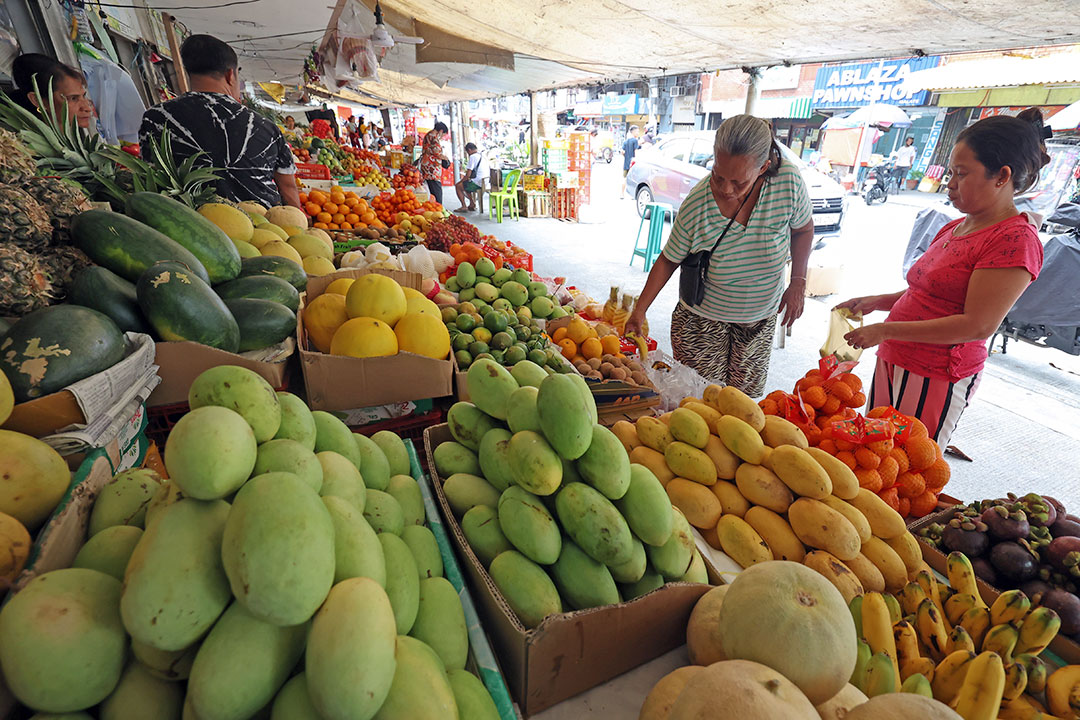




Quarterly Economic Growth Release: More BSP cuts to come
 DOWNLOAD
DOWNLOAD

Monthly Economic Update: Fed catches up
 DOWNLOAD
DOWNLOAD

Inflation Update: Steady and mellow
 DOWNLOAD
DOWNLOAD


PH to grow fastest in the region this year — AMRO

The Philippines is projected to be the fastest-growing economy in the region this year amid resilient domestic demand, the ASEAN+3 Macroeconomic Research Office (AMRO) said on Thursday.
“The Philippine economy has held up very well despite high inflation and interest rates, and it’s much less dependent on exports than other countries in the region,” AMRO Chief Economist Hoe Ee Khor said in a virtual briefing on Thursday.
In its latest Regional Economic Outlook quarterly update, AMRO kept its Philippine gross domestic product (GDP) growth projection at 6.3% for this year, unchanged from its annual consultation report in November.
The Philippines’ growth is the fastest among Association of Southeast Asian Nations (ASEAN) members, ahead of Cambodia (6.2%), Vietnam (6%), Indonesia (5.2%), Malaysia (5%), Laos (4.7%), Thailand (3.3%), Myanmar (3.2%), Singapore (2.6%), and Brunei Darussalam (2.4%).
In the ASEAN+3 region, the Philippines is also ahead of China (5.3%), Hong Kong (3.5%), South Korea (2.3%), and Japan (1.1%).
If the 6.3% GDP growth is realized, however, this would be below the Philippine government’s 6.5-7.5% target for 2024.
However, Mr. Khor cited several risks that could dampen growth this year, such as a spike in global commodity prices; weaker economic growth in China, financial spillovers from tighter US monetary policy, a potential recession in the US and Europe, and US-China geopolitical tensions.
He also flagged the possible impact of the El Niño, which may stoke rice prices.
The latest data from the state weather bureau showed that a strong El Niño is expected to continue through January and is seen to persist until May.
AMRO said the Philippines likely grew by 5.6% in 2023, the same projection it gave in November. This also makes it the economy with the fastest growth in the region but falls short of the government’s 6-7% target.
“As it turns out, I think we were too optimistic on the growth momentum. Momentum is weaker than expected,” Mr. Khor said.
Latest data from the Philippine Statistics Authority (PSA) showed that the economy grew by 5.5% in the nine-month period. Fourth-quarter and full-year 2023 GDP data will be released on Jan. 31.
For ASEAN+3, AMRO expects stronger growth this year at 4.5%, slightly higher than its projection of 4.4% for 2023.
“The region did relatively well last year, better than what we expected, based on better exports and moderating inflation. We expect growth to pick up this year on strong exports and resilient domestic demand,” Mr. Khor added.
AMRO also noted that the recovery of China’s property sector and the rebound in tourism will help support growth in the region this year.
Tighter for longer
Meanwhile, AMRO kept its inflation forecast for the Philippines at 3.6% this year, slightly slower than the Bangko Sentral ng Pilipinas’ (BSP) forecast of 3.7%
“In 2024, headline inflation is likely to remain on a moderating trend in line with the continued normalization of global commodity prices,” AMRO said.
Headline inflation averaged 6% in 2023, the second straight year that inflation breached the BSP’s 2-4% target band.
AMRO also said that the BSP must continue to keep rates tighter for longer until inflation remains within target.
“We agree with the BSP view that the rates should remain tight until inflation is down to within target,” Mr. Khor said.
The Philippine central bank has raised rates by a cumulative 450 bps from May 2022 to October 2023, bringing the benchmark rate to a 16-year high of 6.5%.
BSP Governor Eli M. Remolona, Jr. also earlier signaled that policy easing will only be considered if inflation settles firmly within the 2-4% target.
“As long as the economy is doing strongly, we don’t see the urgency for the BSP to cut rates,” Mr. Khor added. — By Luisa Maria Jacinta C. Jocson, Reporter
This article originally appeared on bworldonline.com





 By BusinessWorld
By BusinessWorld
